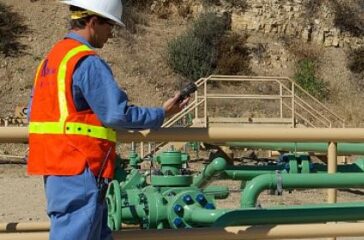Postcard from California: Roadblocks on the path to phase out gas
By Bill Walker
The October 2015 blowout at Aliso Canyon – a vast network of underground natural gas storage wells in Los Angeles’ San Fernando Valley – stands as one of the worst environmental disasters in California history.
Before it was capped after 112 days, the leak spewed forth 5 billion cubic feet of methane and other noxious gases, temporarily displacing nearly 10,000 families from the downwind Porter Ranch community. Residents suffered severe headaches, nausea, nosebleeds and other symptoms, and the fear of potential long-term health effects, including cancer. The US’ largest-ever leak of natural gas sprang from a rupture in a well casing from which owner SoCalGas had decades earlier removed, but never replaced, a worn safety valve.
In 2017, then-Gov. Jerry Brown called for closure of Aliso Canyon within 10 years, to protect health and advance the state’s transition from methane gas, a potent driver of climate change, to clean energy. In 2019, Brown’s successor, Gov. Gavin Newsom, vowed to “fast-track” that timeline.
That pledge has yet to materialize: Well into Newsom’s second term, his appointees to the state Public Utilities Commission (PUC) not only have failed to set a firm date for closing Aliso Canyon but have twice raised the level for how much gas the wells can store.
Now they are poised to do it again.
This week, the PUC will vote on a petition from SoCalGas to boost the storage limit by two thirds, to more than 68 billion cubic feet – the maximum state geologists say is safe. SoCalGas claims stockpiling more fuel at Aliso Canyon would mean lower utility bills this winter, and the commission’s staff recommends approval of the proposal.
 EWG
EWG